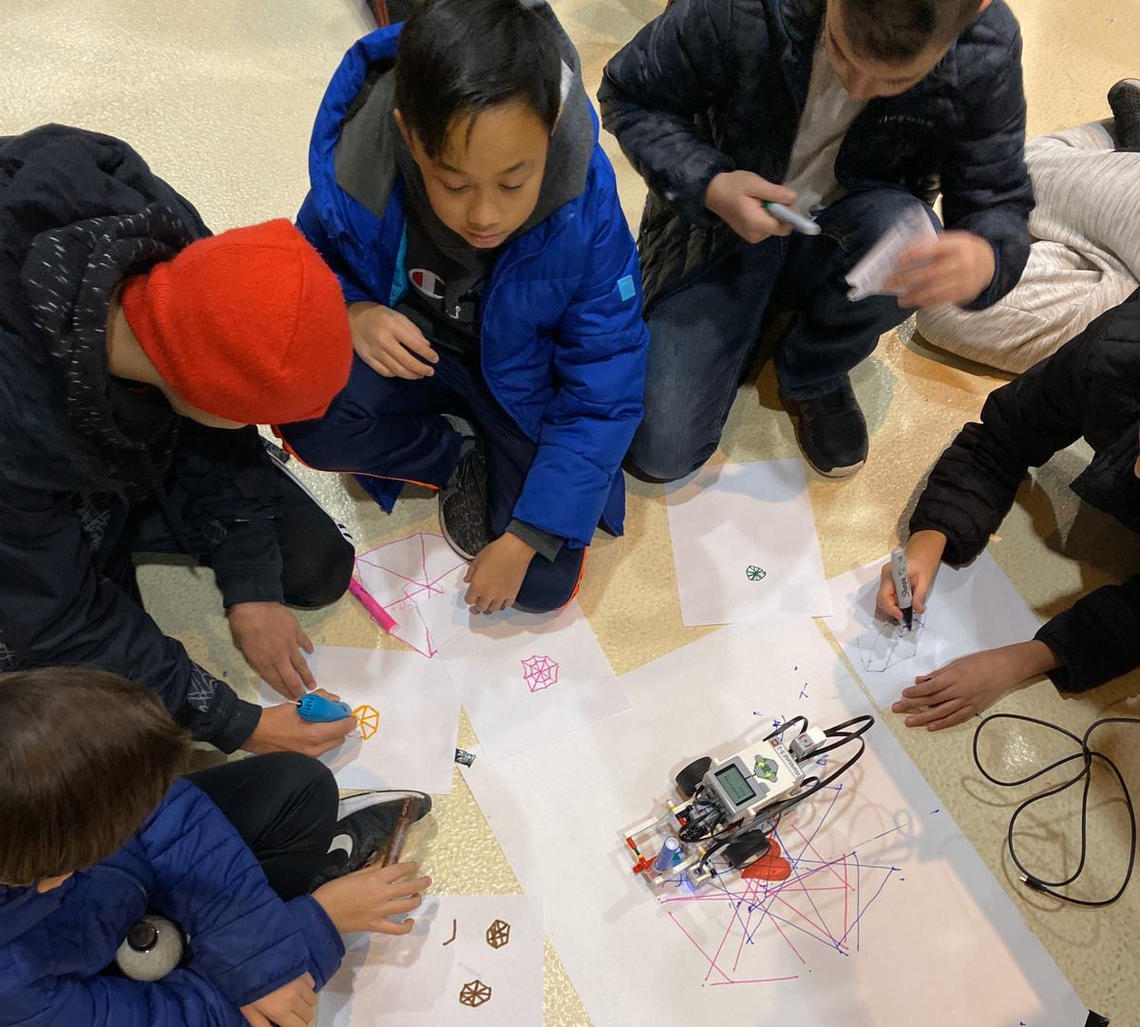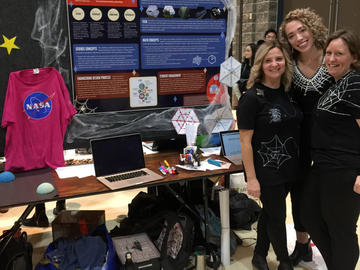Dec. 16, 2019
Encounters with astro trash and space spiders

Space Spiders is not the title of a long-forgotten Roger Corman film. Rather, it is one of the 120 projects presented by first-year Bachelor of Education students at the recent Werklund School of Education STEM showcase.
The theme of this year’s showcase was Make the World a Better Place, which Cassandra Boland, Laura Dudek and Rachel Phillips interpreted to include not only earth but also the solar system. The trio created a challenge for Grade 6 students based on a current NASA-funded research project.
In the scenario, Earth is running out of resources so lightweight, compact and durable web-like frameworks are needed to support habitation on other planets. The webs will be built by autonomous spider-like robots in space. Using their STEM knowledge, students must design and program the robots to draw a web for a potential framework design.
- Photo above: Bachelor of Education student Raneem Elhowari explains the role robots can play in preventing forest fires at the recent Werklund School STEM showcase. Photo by Riley Brandt, University of Calgary
“Our concept applies STEM concepts in connection to spiderweb designs and biomimicry to both modern-day and future innovations that better our planet,” explains Boland. “We thought we could have fun with Grade 6 students by making the robot a spider and incorporate mini-challenges that include math concepts, biomimicry and design that they could take home with them for reference. Many visitors left with 3D spider webs that they created after making origami spider webs.”
Tackling local and global dilemmas
Werklund School associate professor Dr. Armando Preciado Babb, PhD, who helped organize the event, explains that students in the Education 427 course were required to design a STEM education task for K-12 students that used Lego Mindstorms EV3 robots. While the project had to include mathematics and science concepts that align with the Alberta Programs of Study, how exactly this was accomplished was left up to the participants. Issues tackled included sustainability, mitigating the effects of natural disasters and using STEM to engage in the arts and humanities.
Babb says he was quite happy with the originality demonstrated. “The students’ enthusiasm was impressive. Our teaching students are learning state-of-the-art philosophies and techniques in education, their ideas and creativity will contribute to change in the school system.”
Werklund School Instructor Dr. Polly Knowlton Cockett, PhD, found that the students took the challenge to heart.
“The BEd students developed authentic inquiries for their future students to address local and global issues. These projects are grounded in care and thus address the health and well-being of ourselves and the more-than-human world,” she says.

Students apply STEM skills to design web frameworks that will withstand space travel
Courtesy Cassandra Boland
One of several highlights for Knowlton Cockett was the team that explored the peril of space debris. Matthew Worton, Amy Pham and Joseph Chidley went as far as creating a chilling film trailer entitled Astro Trash to demonstrate how robots could be employed to manage this growing threat.
A more earthbound project was Raneem Elhowari, Carmen Drysdale, Katelyn Slessor and Martina Cardone’s examination of the dangers posed by forest deadfall.
“After we found out that there are about 18,000 forest fires in Alberta, we decided to build robots that work in environmentally and socially just ways,” says Cardone. “By removing deadfall from the forest, the risk of forest fires is decreased, allowing rainfall and additional moisture to be used for new plant growth.”
Problem solving, scientific inquiry, computational thinking and pattern recognition were a few of the skills participants had to employ while engaging with the project, which was designed for Grade 3 students.
Connecting with community
To share this learning opportunity with the community, K-12 schools were welcomed to attend. “A very important feature of the STEM education approach in this course is to participate in society. I know that many practicing teachers are interested in what student teachers design during the program,” says Babb.
Heather Lai brought a complement of Westmount Charter School Grade 6 students to the showcase and says they were inspired by the experience. “The feedback from the students was extremely positive. The students really enjoyed the many ideas presented. They loved the interactive experiences the most.”
Lai also found value in the student work herself. “I was able to see other ways to inspire students with robotics. I also liked connecting with various pre-service teachers as I could always learn from them.”
Babb was pleased to find that the event was beneficial for all involved and is already planning to expand next year’s showcase to include more community groups as well as digital presentation options.

















